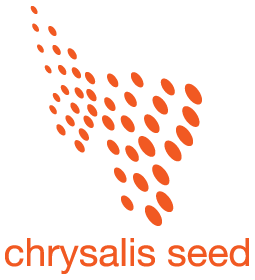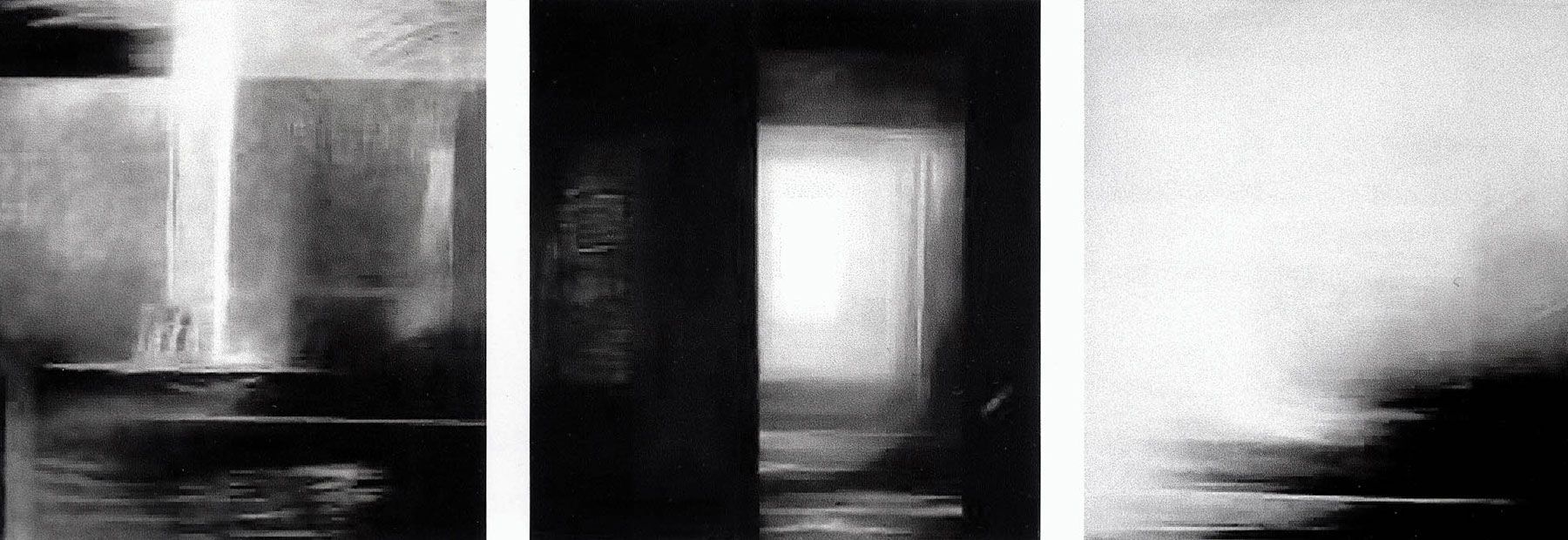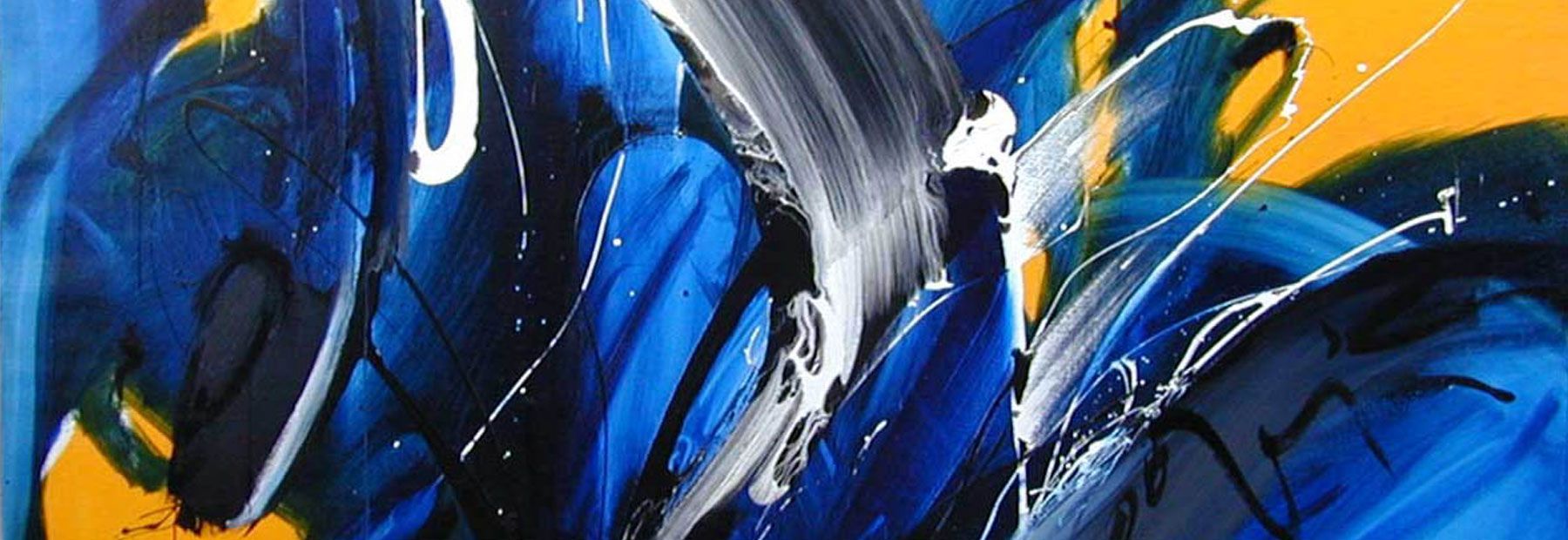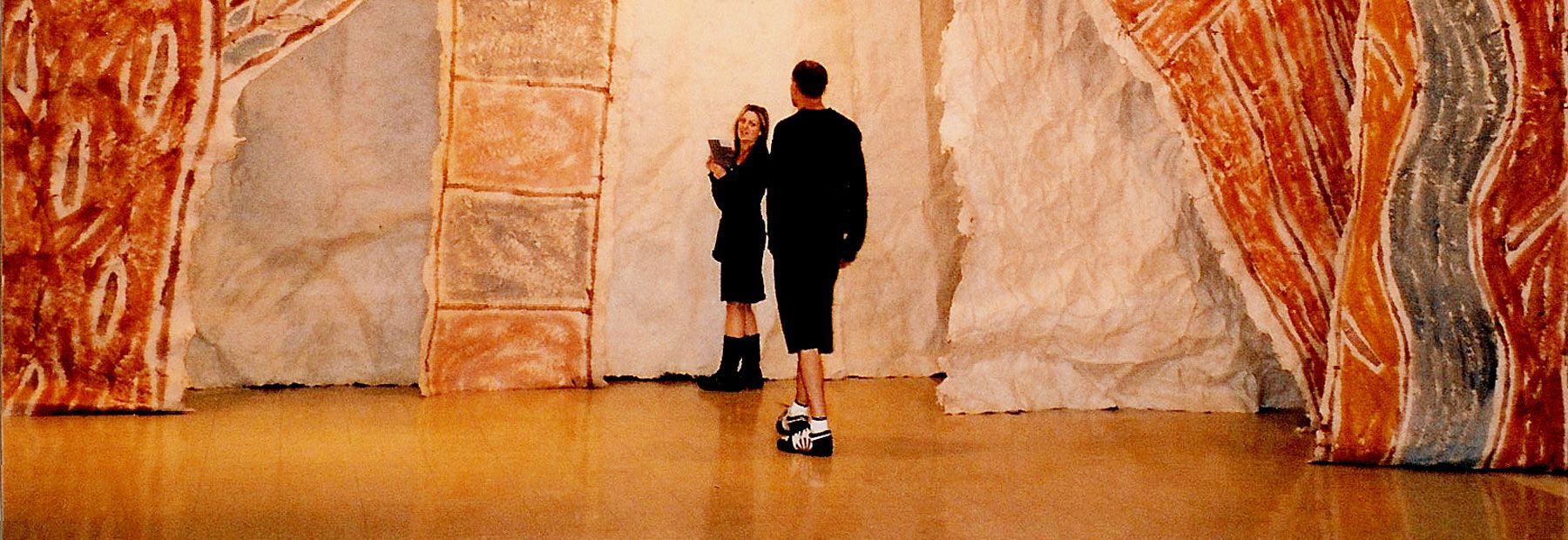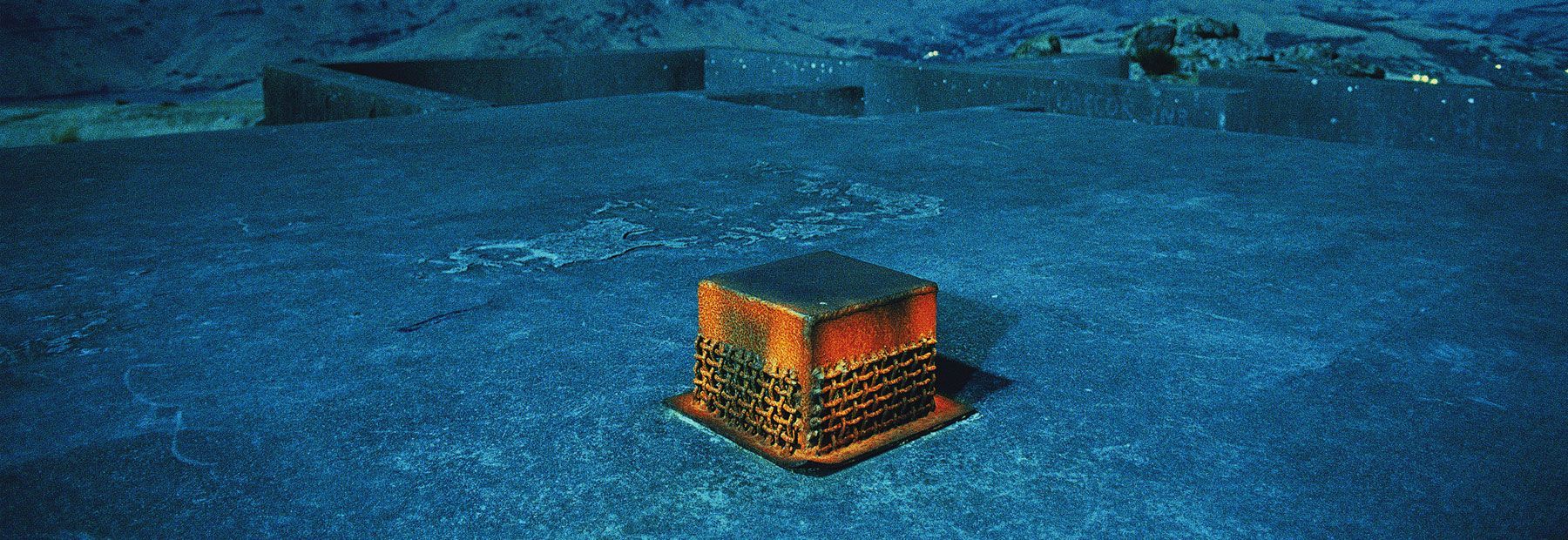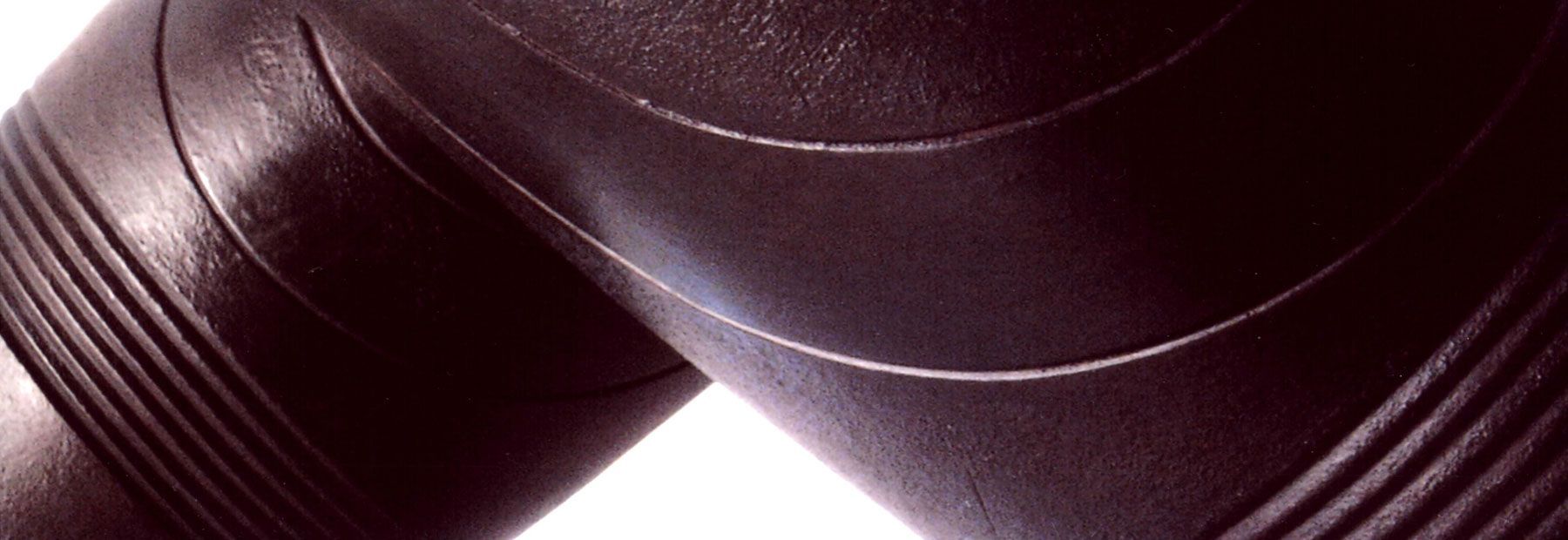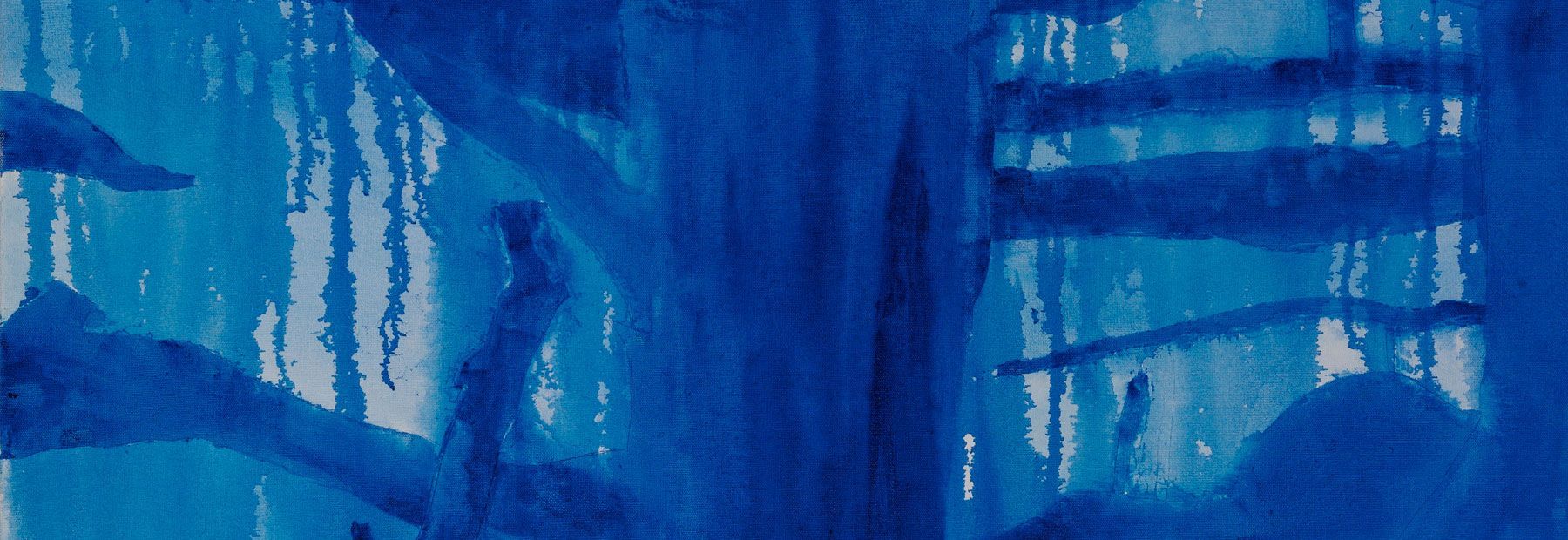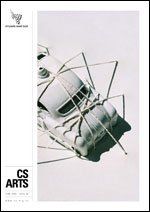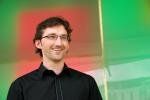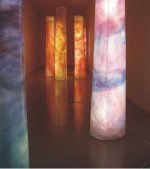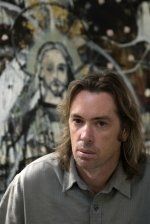Presence, not pictures
An interview with Brett a’Court
On entering the dimly lit, corrugated iron roofed studio in its country location, I was immediately confronted with intensity—both of the works and the artist. Grappling with big, expansive themes, the paintings both confront the onlooker and draw them in. Intense gyrations of light and dark surround sexual organs and crucified Christs. But unlike many contemporary juxtapositions of such imagery, there is no ironic statement here—rather an honest exploration of what it means to be human.
A superficial reading of these works might dismiss them as being brooding and dark. Much more is discovered through a closer look. Influences range from medieval Christian mystics, Yoga Bakti, Renaissance masters Massaccio and Leonardo, and our own Colin McCahon.
Brett explains about his radical shift in style, and the underlying concepts behind it. He gives us some glimpses into the furnace of financial need that drew him closer to God and a fresh range of artistic influences and spiritual disciplines.
Challenge and struggle
Brett a’Court works from his home studio at the charming location of Waipu, just south of Whangarei. He’s been living there for twelve years with his wife and two young children. Visible from the road is the spectacular deep blue of the Northland coast, and nearby islands. Tourists dive below the surface looking for fish. This artist dives deep for artistic inspiration and spiritual truth.
‘My first exhibition was in Auckland at the Letham Gallery in 2002. It was a solo show and sold well. However soon after I was meditating on a scripture ... Jesus, talking to his disciples, said "Put down your nets into deeper water and make a catch". I also read a book on Picasso with this quote: "A good work should bristle with razor blades". I struggled to dive deeper into the meaning of existence. The hearing of God’s voice ... to be still, the lost practice of Christian meditation ... aspects of yoga in a Christian context.
‘I started painting and looking at the human figure. I wanted to look beyond what we see and go into our "spiritual anatomy", but in doing this I felt my own experience and life would change. I felt challenged by the words "Seek first the kingdom of God and all these things shall be added to you". I left my bread-and-butter ceramics job and kind of entered into an abyss ... experiencing interesting provision, but also learning aspects of Francis of Assisi: through having little I have somehow been drawn deeper into the divine presence.
‘In 2005 I met John Hodgson from Art–Artz who put on a show for me in a chapel-like hall in Parnell, Auckland [May 2006]. We exhibited the four-year struggle. I think in many ways this was my beginning.’
Doubt, fear and faith
‘I have had this drive to look beyond the physical. I started to understand more about dealing with doubt and fear as a way to truth. Many times I was faced with financial difficulty, causing me to fear. Yet fear is an undercurrent of our existence. It's there in my work. The fear of losing the house was one example, not having enough money to pay the bills.’
Brett explains how he was challenged to move beyond his fears and trust God for his material needs. He recounts examples from times when his ‘... back was right against the wall’: an unexpected back-payment of two thousand dollars from the Inland Revenue Department; a fellow artist handing him an envelope containing five hundred dollars, saying ‘I felt God wanted me to give you this’. But Brett keeps it in perspective. ‘This ... was not always the case, and I learned that sacrifices were constantly needed if I was to produce painting that would be more than just pictures.’
Artistic influences
His struggle with fear, doubt and faith reflect his artistic lineage. ‘Faith, I am finding, is not a dogma or a doctrine but an experience. This experience brought me face to face with some of McCahon’s major works. I could see the possibility of visually being able to unearth spiritual truth, to paint it.’
During this formative period, a’Court explored Renaissance iconography as well as the tradition of icons. Artists from this period provided a rich vein of material for Brett to give artistic substance to his emotional and spiritual journey.
‘My arts practice has lead me to the aspects of religious art that have a presence. I have found that such art can produce the miraculous. At the same time it should be open to interpretation, and not be a tirade of propaganda or sentimentality. I don't believe I have achieved this ... but it’s there in my thinking.’
The spiritual dimension of human existence
‘In my second-to-last exhibition, Lingua Sacra, I painted a five-metre veil based on Massaccio’s The Holy Trinity with the Virgin, St John and Two Donors. Renaissance work has always intrigued me with its figurative representations of the spiritual dimension. I have tried to find a way of painting the spiritual dimension that is linked to the past, but also with the breakthroughs in modern art—like Rothko’s work, which seems to hold a spiritual power in its non-representative motif.
‘I never see painting to be about pictures but about presence. However, I am personally linked in painting to the human figure. It’s my starting-point. We are made in the image of God. In this period, I felt like I was peeling back layers ... I started to dissect the human figure, creating this chaos of body parts and religious imagery. The sexual element and female forms started to become a large part of my work. I felt this need to express the female aspect of the divine, which seemed to want to birth its way through the work.’
On how his work is received
‘The content of my work in the commercial environment of art galleries is certainly difficult at times. A large body of my work incorporates religious imagery with sexual content, not to shock but to produce a certain effect, message and power. The comment by one gallery was to the effect of: "Powerful work ... but the subject matter?"
‘I really have two currents of work, both hunting for essence and presence. In the first, the Ground of being series, I have taken Brancusi’s statement "simplicity: at the bottom of it is complexity" [sic] and tried to come at it from a different angle. I wanted the simplicity to be unseen, as it is the eternal. Yet to bring you into this I have tried to use the brush like a scalpel, dissecting, creating chaos.
‘This has been misunderstood at times. The work is hard to read, and looks like an inexperienced painter who sticks everything into a work. But it has this pull factor, like a vortex. This has been commented on, and has bewildered at least one notable art guru. However the other series, Behind the religious image, seems to be commanding a wider respect. It is in many ways less demanding.’
Behind the religious image
This unassuming Northland visionary picks up the prophetic heritage of McCahon and Tony Fomison. He explores this with the honesty of James Robinson, and anchors it in contemporary Christian mysticism through his own unique fusion. Brett has just had an exhibition of new work at the Wallace gallery in Auckland’s Queen Street (May 2008). It was originally called Behind the religious image. About the work in this recent exhibition, the artist explains:
‘This is my response in many ways to the religious images that have affected me personally. What is behind the facade, the skin? Colin McCahon’s work is something I often comment on in my paintings. I believe he left us with a vacuum ... a road ... this has been hard for us to carry on. We focus on the doubt, not the "spiritual truths" that McCahon unveiled. Without searching for this spiritual intent we cannot carry his legacy forward.
‘Being a painter is—even at its hardest—a big privilege. What I want to do with this privilege is to not be mediocre. I want my work in some way to heal, to help, to communicate. But I also believe strongly that good work is always ambiguous. Its strength is its openness to interpretation.’
Brett was interviewed by Peter Crothall.
